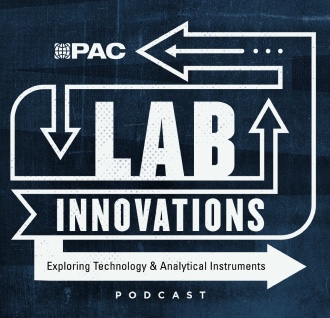Mar-2024
Pave the way for greener, more efficient thermal systems
Process heating is a critical part of any hydrocarbon processing. Traditionally, this heating has been done by burning fossil fuels (natural gas), but more and more plants are turning to electric process heaters. One of the benefits of doing so is that electric heaters allow for much more precise control of both the heating element surface temperature and the power draw of the system.
Jeff McClanahan
Watlow
Viewed : 2107
Article Summary
This isn’t just the ability to tweak the settings of the thermal system at any given moment. The kind of control that can be afforded today is predictive control, the kind of control made possible by having actionable insights based on data.
This kind of predictive control has been a goal throughout the development of our own WATCONNECT control panels. These panels afford an integrated solution that includes heaters, sensors, temperature controllers and power controller products, all in a complete thermal loop solution. The WATCONNECT L and XL sizes are particularly suitable for large industrial applications as is typical in the petrochemical industry.
The predictive control is enabled by the Data Insights package offered with WATCONNECT. This data package enables the control panel to track power and controller health, as well as monitor system changes over time. As it turns out, having this kind of data enables engineers to get ahead of some of the most pervasive problems in process heating in the industry: Coking/fouling, heater failure (and the ensuing downtime), and the need for electrification to reach decarbonisation goals.
Coking/fouling
Petrochemical refining operations often use heat exchangers in processes that are conducive to coking and fouling. Fouled heaters can contaminate or disrupt processing, and thus must be cleaned and/or replaced – a costly bit of maintenance itself. Data Insights can monitor the system for drift that could be indicative of coking/fouling or other degradation in the system, signaling the need for maintenance.
Heater failure and downtime
It is a fact of physics that heater elements occassionally fail. Continued failure of an element eventually leads to an inability to produce enough heat to reach (or sustain) the intended outlet temperature. This can cause further issues with the process in question, including incomplete processing and/or fouling or film boiling. Being able to detect when an element has failed can avoid more serious problems that lead to unscheduled maintenance.
Electrification
Process heating is a significant source of energy use and greenhouse gas emissions in the industrial sector, and so replacing fossil-fuel based heaters with electric ones running on green energy should yield significant progress towards decarbonisation goals. Adopting solutions for the first time will naturally bring about questions in the minds of process end user engineers – questions about process variation, network loads, component failure, and so on. Modern data collection technology, along with sophisticated data analysis, can monitor processes and allow these kinds of questions to be answered in real time.
Collecting the Right Data, in Real Time
Having the right kinds of data about systems and component operation and health mitigates many of the risks that come with implementing new technology. To take the first example from above, detecting temperature drift in a process can often indicate coking or fouling that will cause future maintenance issues. If a process end user operator can detect a pattern of drift that signals that this problem is imminent, then unplanned downtime can be avoided with a planned maintenance cycle.
WATCONNECT panels equipped with Data Insights enable this kind of detection, as they are constantly collecting data relating to system power (current and voltage), process values, set points, panel environment, and even wiring terminal temperatures. This enables the panel to, in effect:
• Monitor power and temperature controller health
• Detect failed elements
• Detect and monitor process drift over time
• Monitor panel environmental data and alert appropriate parties to changes in environmental conditions that could lead to a failure
• Monitor field wiring terminals and prompt for maintenance to tighten terminals.
Making Sense of the Data: Analysis
If the solution to the above challenges were simply ‘collect more data’, then those challenges would be solved already. Most organisations are awash in data these days, or at least have access to technology that can be used to gather it. What is needed is the ability to make sense of that data.
For example, consider: What kinds of process drift, and over what time periods, are truly indicative of coking? What sorts of patterns of power consumption show that some heater elements are over-compensating for a failed one? When do changes in the panel environment merit immediate intervention?
These are the sorts of questions that can only be answered through extensive experience with the data as it pertains to real-world systems. This is why we offer a full data service as part of the Data Insights package that comes with WATCONNECT L and XL panels . We have found that, when raw data is provided, it is not always clear how to make that data “actionable.” But when process data is analysed by a data scientist and a thermal system expert, together they can provide insights and make recommendations for system improvement. Then, by collaborating with engineers familiar with the industry application in questions, they can help put the data into context.
This kind of collaboration has proven to be a time saver as well. With WATCONNECT control panels, our team can keep a close watch as the data comes in, freeing the end user so that they can maintain their focus on critical process parameters and KPIs. Our team can alert the end user when action is needed while removing the need to constantly check and recheck data dashboards. By providing the needed data analysis, Watlow provides a complete solution for a reliable electric heating system.
In summary, predictive control of process heating can help mitigate some of the challenges that are common in petrochemical processing, including coking/fouling, heater failure/downtime, and the slow pace of electrification. Achieving predictive control requires the right combination of new technology (WATCONNECT and Data Insights being a prime example) and technical knowledge around thermal systems and data analysis. When both are in place, it paves the way for greener, more efficient systems and processes.
Sponsor:
Categories:
Add your rating:
Current Rating: 3

















